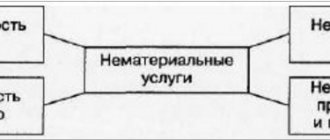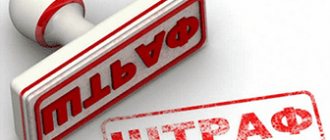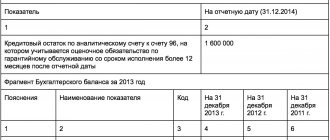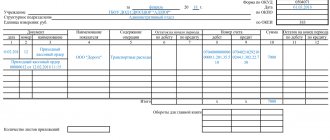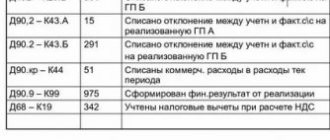What are business transactions?
A business operation (HO) is a specific action that changes either the composition of property, or its location, or the sources of its formation. POs may also be associated with changes in budget formation, the company’s ownership structure, equity and borrowed funds, and reserve capital. The fact of a business transaction is the basis for creating an accounting entry. The posting is generated on the basis of documents confirming the operation.
A certain event entails a change in indicators. For example, capital and the volume of property may change. Values can either increase or decrease. Changes in capital cause changes in the balance sheet currency. Consequently, the amount of assets and liabilities also changes.
What information about business transactions should be recorded in the accounting policy for accounting purposes?
Examples of business transactions in accounting
Let's look at examples of operations and their approximate structure:
- Supply. Examples of business operations: receipt of raw materials, transfer of funds to the supplier, input of raw materials into production.
- Implementation. Examples of financial expenses: expenses for sales of products, receipt of revenue, sale of goods.
- Production. Examples of financial assets: payment of salaries to employees, depreciation of fixed assets, acceptance of the work of a contractor, transfer of funds to a contractor.
These are the most common types of business transactions.
How to carry out internal control of business transactions ?
Types of business transactions
Let's look at the table with the classification of business transactions:
| Impact on balance | Debit correspondence | Loan correspondence |
| Change in Assets | Active | Active |
| Changing Liabilities | Passive | Passive |
| Increasing assets and liabilities | Active | Passive |
| Decrease in assets and liabilities | Passive | Active |
These are four types of transactions, which are classified according to the way they affect the balance sheet.
Let's take a closer look at the types of transactions (A is an asset, P is a liability, O is turnover):
- 1 type Entries that reduce one asset item by increasing another.
Examples of type 1: goods have arrived at the warehouse, money is sent from the account to the cash register. In this case, the structure of the property changes, but the final amount remains the same. This type has the following formula: A balance + O on the debit of account 1 – O on the credit of account 2 = P balance. - Type 2 Postings changing liability items.
Examples of type 2: multiplying reserve capital by changing the amount of profit. In this case, the chemical enterprise causes a change in the structure of sources of funds, but the final assessment remains the same. This formula belongs to this type: A balance = P balance + O for the credit of account 1 – O for the debit of account 2. - Type 3 Actions that increase the value of a company's assets and liabilities.
Example: operations for the sale of fixed assets, obtaining a loan. Postings change the balance sheet currencies. Formula: A balance + O on the debit of account 1 = P balance + O on the credit of account 2. - Type 4 Actions that reduce the value of liabilities or the amount of equity capital by reducing the amount of assets.
Example: payments to suppliers. In the process, both assets and liabilities are reduced. Formula: A balance – O on the debit of account 1 = P balance – O on the credit of account 2.
Operations are also classified according to their content:
- Material. Movement of inventory items is expected.
- Financial. Assume the movement of funds.
- Calculated. Settlements with counterparties.
The type of transaction determines the features of its reflection in accounting.
The unreality of business transactions as one of the reasons for refusing a VAT tax deduction.
Types of balance sheet currency changes
Currently watching: 9235
We talked about how to read a balance sheet in this article. Today we’ll talk about the types of changes in balance sheet currency.
The balance sheet currency is the final indicator of two sections: assets and liabilities (line 1600 for assets, and 1700 for liabilities)
Different transactions can have different effects on the balance sheet structure. And the balance sheet, we know, is the most important source of information about the financial position of an organization.
But even in the process of economic activity, when there is an increase or decrease in capital and liabilities, these operations do not violate the equality of assets and liabilities. Although in the context of individual items and the balance sheet results themselves, changes may occur.
This is explained by the fact that each operation affects two balance sheet items, namely: the size of the property or the size of the sources of its formation. Moreover, they can be both an asset and a liability at the same time.
So, depending on the nature of changes in balance sheet items, operations can be divided into 4 types:
The first type of change in balance sheet currency - + ASSET - ASSET - is characterized by a change in asset items with a constant balance sheet currency
For example: to pay salaries to the organization’s personnel, cash in the amount of 100,000 rubles was received from the current account to the cash desk. According to this operation, two balance sheet asset items are affected: account 51 “Current accounts”, account 50 – “Cash”. In account 50 “Cash” the amount increases, and in account 51 “Cash accounts” the amount decreases. The postings will be as follows:
Dt 50 Kt 51 – 100,000 rubles
As a result of this operation, the balance sheet currency will not change, but only the amounts within the Asset section will change.
The second type of change in balance sheet currency - + LIABILITY - LIABILITY - is characterized by a change in liability items with a constant balance sheet currency
For example: based on the minutes of the meeting of founders, part of the net profit remaining at the disposal of the organization in the amount of 4,000 thousand rubles is used to increase reserve capital. According to this operation, two liability items in the third section of the balance sheet are affected - “Retained earnings” account 84 downward and “Reserve capital” account 82 upward. The resulting wiring will be as follows:
Dt 84 Kt 82 – 4,000,000 rubles
The third type of change in the balance sheet currency - + ASSET + LIABILITY - causes changes in the asset and liability items upward when the balance sheet currency is equal
For example, materials worth 10,000 rubles were received from suppliers and posted to the organization’s warehouse. According to this operation, the asset balance sheet item “Materials” account 10 and the balance sheet liability item “Settlements with suppliers” account 60 will increase; The balance sheet currency will also increase by this amount. The accounting entry will be as follows:
Dt 10 Kt 60 – 10,000 rubles.
The fourth type of change in the balance sheet currency - - ASSET - LIABILITY - causes changes in the asset and liability items downward when the balance sheet currency is equal
For example, wages were paid to the organization’s personnel in the amount of 100,000 rubles. As a result of this business transaction, balance sheet asset item 50 “Cash” and balance sheet item 70 “Settlements with personnel for wages” are reduced. The balance sheet currency will also decrease by the amount of the business transaction. The wiring will be as follows:
Dt 70 Kt 50 – 100,000 rubles.
An increase in the balance sheet currency may indicate an increase in assets and scaling of the enterprise’s economic activities, while a decrease in the balance sheet currency (in absolute terms), on the contrary, may indicate a decrease in business activity.
But it is impossible to interpret this indicator unambiguously, since the analysis of financial statements and the financial and economic activities of an enterprise is a rather intensive process and requires the analysis of many indicators to establish a conclusion.
If you need to easily learn accounting without memorizing and as a result get exactly an UNDERSTANDING of accounting, I invite you to take the online course “Accounting from Scratch” after studying which you will easily be able to make accounting entries, close accounts, prepare a balance sheet, income statement and losses and even tax returns. You can find out more about this course here.
How to set the operation type
To determine the type of transaction, you need to analyze which accounts were used in the transactions and what changes in the balance sheet currency were made. The following information will help make the determination easier (A – active, P – passive):
- Active XO. Correspondence: both accounts A. Dt increases, and Kt decreases. The balance does not change.
- Passive XO. Correspondence: both accounts P. Dt decreases, Kt increases. The balance does not change.
- Mixed XO for an increase. Correspondence: Dt - A, Kt - P. Dt and Kt increase. The balance increases.
- Mixed XO for reduction. Correspondence: Dt - P, Kt - A. Dt and Kt indicators are decreasing. The balance will be reduced.
To accurately establish the type of transaction, you need to have information about the chart of accounts and balance sheet structure.
FOR YOUR INFORMATION! An asset is the company's property, and a liability is the sources of this property. There are mixed forms in both assets and liabilities.
TYPES OF CHANGES IN THE BALANCE SHEET
The balance sheet records the state of property and its sources as of a certain date, but under the influence of business transactions its state may change. There are four types of balance sheet changes caused by business transactions.
First type: A+A
Business transactions affect the change in the asset, that is, the composition of the property, while the total balance sheet currency does not change.
Second type: P+P -
Business transactions affect changes in liabilities, i.e. sources of funds, while the total balance sheet currency does not change.
Third type: A+P +
Business transactions simultaneously cause an increase in both assets and liabilities of the balance sheet. The total balance sheet currency increases by the same amount.
Fourth type: A-P -
Business transactions simultaneously cause a decrease in both assets and liabilities of the balance sheet. The balance sheet total decreases by the same amount. For clarity, these types of balance sheet changes can be depicted schematically as follows.
Table 3
Types of balance sheet changes caused by business transactions
| Type changes on balance | Assets | Passive | State of the currency (total) balance | |
| increase | decrease | increase | decrease | |
| l type | + | Doesn't change | ||
| Type 2 | + | Doesn't change | ||
| Type 3 | + | + | + | Increases |
| 4 type | Decreases |
Note: A plus sign (+) means an increase in the balance sheet item, a minus sign (-) means a decrease in the balance sheet item, and a zero sign (0) means that the transaction does not affect the balance sheet item.
Accounting entries depending on the type of transaction
Let's consider transactions for the first type of business transactions:
- Direction of raw materials to production: Dt20 KT10.
- Receiving funds from the buyer: Dt51 KT60.
- Directing funds to the cash desk: DT50 KT51.
Accounting entries for type 2 transactions:
- Withholding personal income tax from salary: Dt70 KT68.
- Increase in reserve due to profit: Dt84 Kt82.
- Advance payment to the supplier from borrowed money: Dt60 Kt66.
Postings for transactions of type 3:
- Receiving material from the supplier: Dt10 Kt60.
- Payment of salaries: Dt20 Kt70.
- Receipt of borrowed funds: Dt51 Kt66.
Postings for transactions of type 4:
- Loan repayment: Dt66 Kt51.
- Payment of salaries: Dt70 Kt51.
- Direction of payment to the supplier: Dt51 Kt60.
These are the accounting entries that are used most often.
Nuances of posting transactions
Each operation has a dual nature. It affects both assets and liabilities simultaneously. The dependence of Dt and Kt is called correspondence of accounts. On the left (on debit) the remaining assets of the company are recorded, and on the right (on credit) – the source of its origin. Postings must be recorded at the time of the transaction.
Each wiring is documented. Primary documentation confirms the actual existence of a business transaction. Not only accountants, but also managers and executives work on its preparation. The primary documentation must contain the following mandatory information:
- Signatures of authorized persons.
- Information about the person responsible for the operation.
- Information about the contents of the operation.
- Date the document was completed.
- Document type.
For ease of entering information, the account is assigned a number. Double entry allows you to confirm the equality of turnover in terms of Dt and Kt for the reporting period. If an inequality has formed, this is evidence of an error. Also, double entry makes it easy to establish the contents of the posting.
Examples
Let's look at examples of reflecting transactions in accounting:
- The account of Prioritet LLC received funds in the amount of 5 thousand rubles for the transferred goods. In this case, the following wiring will be used: Dt51 Kt62. Transaction amount: 5,000 rubles. In this case, the balance sheet currency remains the same, but the assets change. The current account is replenished by 5 thousand rubles, the “Settlements with customers” account is reduced by the same amount.
- At the end of the reporting period, Priority LLC made a profit. The manager needs to calculate dividends in the amount of 10 thousand rubles. The wiring will be as follows: Dt84 Kt75. Transaction amount: 10 thousand rubles. The balance currency remains the same. Only the passive changes.
- Raw materials worth 4 thousand rubles arrived at the warehouse of Prioritet LLC. The wiring will be like this: Dt41 Kt60. Amount: 4,000 rubles. In this case, the balance sheet currency changes.
- Priority LLC transferred funds in the amount of 5 thousand rubles to the supplier for delivery. The wiring will be like this: Dt60 Kt51. Amount: 5 thousand rubles.
The posting reflects the amount of the transaction, as well as the primary document on the basis of which it was generated.

